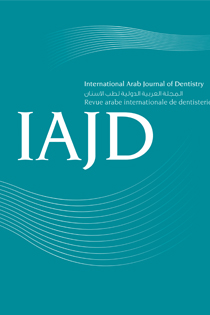Abstract
The aim of this study was to compare the shaping ability of ProTaper rotary instruments (Universal), ProTaper rotary instruments (Next), hand ProTaper instruments and traditional NiTi hand instruments in long oval-shaped root canals. Forty human teeth with long oval-shaped root canals were sectioned at one level in the apical third, 3 mm from the apex. A modified Bramante technique was used; changes in the surface area (ΔA) of the root canal were analyzed. The sample was divided into
four subgroups of 10 teeth. Each group was prepared using one of the four instrumentation systems. The morphological changes were analyzed using a software program (AutoCAD 2013). The data were subjected to an ANOVA one-way test with a significance level of p<0.05.The changes in the surface area of the apical third of
the treated teeth were not statistically significant among the four groups.

